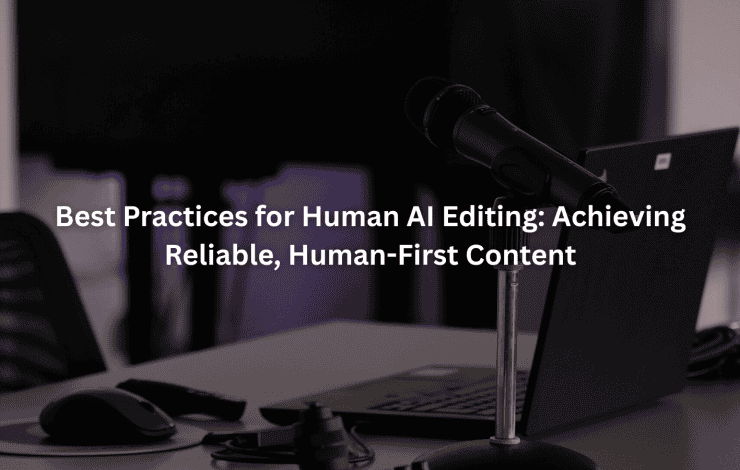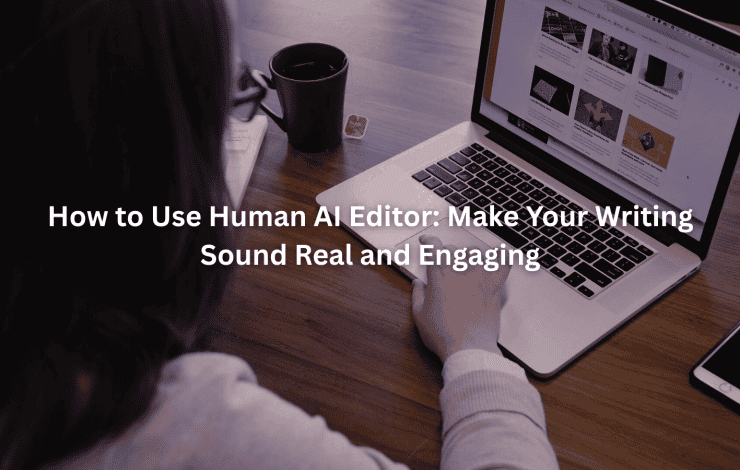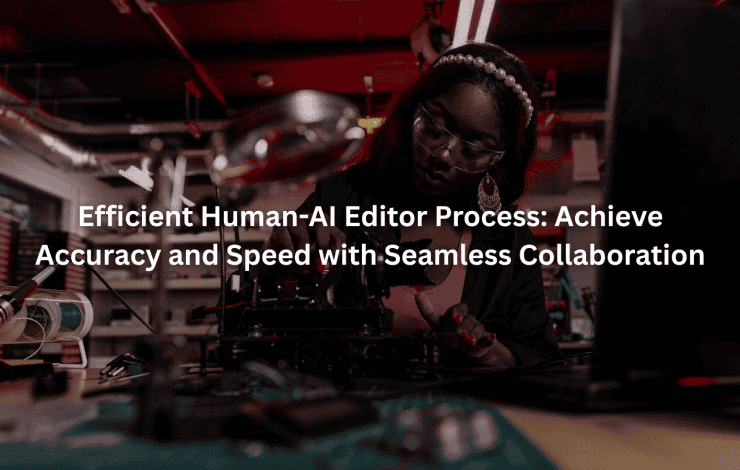Let machines do what they’re good at: number crunching, fact-checking, and churning out rough drafts faster than we can finish a coffee. But leave the soul of the story to people. We know when to pause for effect, when a story needs more heart than facts.
Works better that way. The AI catches our mistakes, we catch its tone deaf moments. And somehow between the circuits and coffee cups, magic happens. Stories get sharper, deadlines get easier. Together we’re building something neither side could manage alone. Not perfect yet. But getting there.
Key Takeaways
- Balance AI’s automation with human creativity and judgment for optimal results.
- Clear task allocation and open feedback loops enhance collaborative content creation.
- Consistent human review and ethical oversight keep quality and accuracy high.
Principles of Effective Human-AI Editorial Collaboration
When AI first arrived in the newsroom, nobody really liked the new kid. That quiet machine sitting in the corner, cranking out stories faster than anyone could read them. The staff didn’t trust it at first. They’d circle around their coffee cups in the break room, whispering about job security and the death of creativity.
But time has a way of changing things. After six months, that AI system became just another tool. Like spell check, but smarter. And pickier.
These principles reflect a broader industry truth: while AI tools can handle volume and data-processing, the uniquely human traits, like empathy, critical thinking, storytelling, and ethical judgment, remain irreplaceable in the creative process [ 1 ]. Some rules emerged naturally:
- Let AI tackle the research. It can read 50 articles in the time it takes to finish a cup of coffee
- Keep the machine away from emotional pieces. It just doesn’t get why people cry at weddings
- Use AI for first drafts, but never the final version
- Double check its facts. Even smart robots make dumb mistakes
- Trust your gut when something sounds off
The best stories now come from teamwork. The AI catches things humans miss, and humans add the spark that makes readers care. Its like having a really smart assistant who never gets tired, but also never quite gets your jokes.
Truth is, newsrooms work better with both. Humans bring the heart, machines bring the horsepower. Together, they’re creating journalism that’s more accurate and more interesting than either could manage alone.
And yeah, sometimes the AI still makes everyone a little nervous. But that’s probably a good thing. Keeps us on our toes.
And let’s be honest about who’s doing what. When someone asks how we put together that killer feature story, they deserve to know. Was it AI research with human storytelling? Pure human creativity with AI fact checking? Keeping it real builds trust.
The best part? Our editors are getting smarter about using AI. They know exactly how to ask for what they need. How to guide the machine toward better results. Not perfect yet. But getting there.
Teamwork. That’s what it comes down to. Each side brings their A game. Together.
Optimizing Roles and Workflows in Human-AI Partnerships
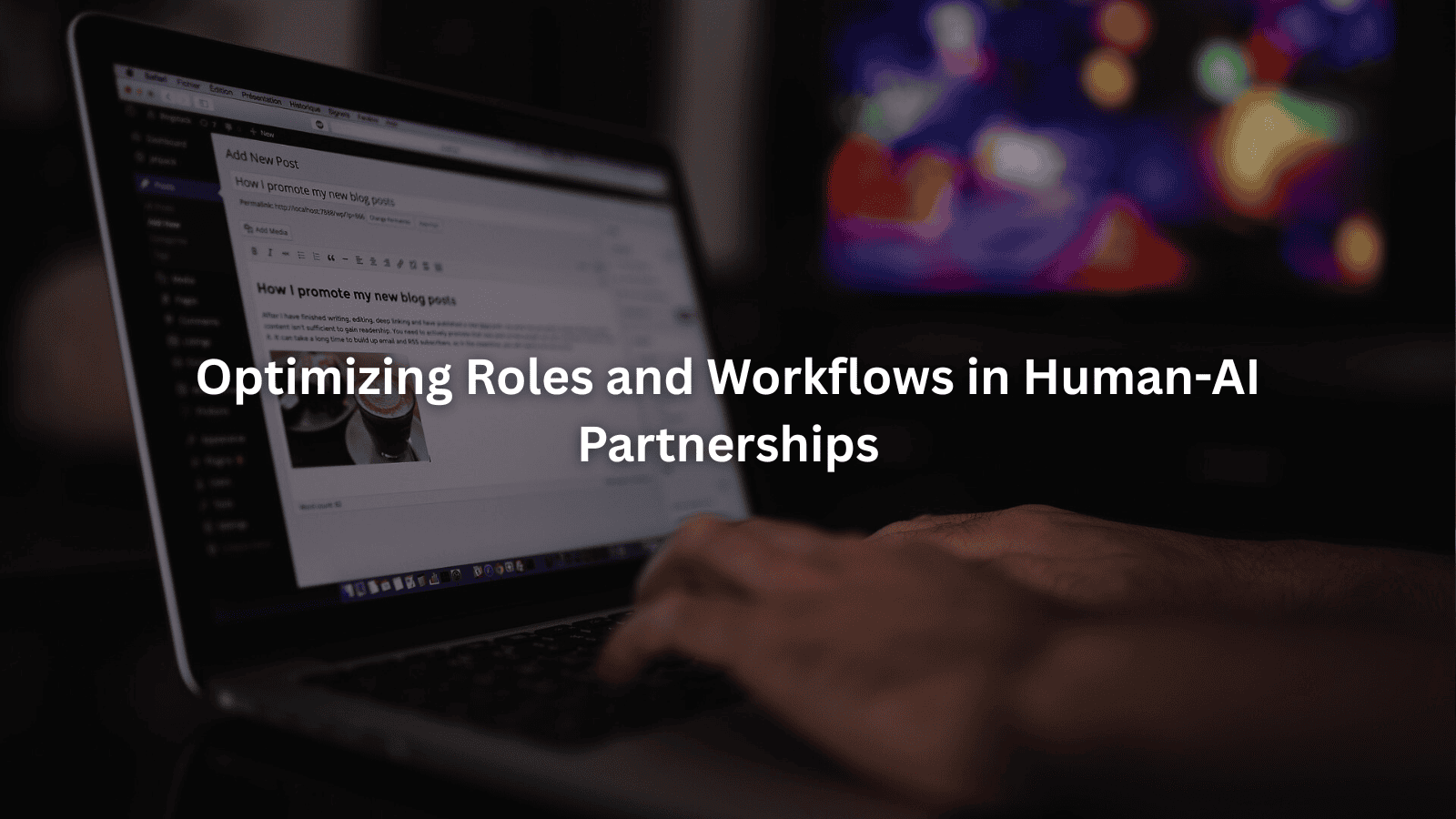
Nobody knew who should do what at first. Total chaos. People kept asking if they should trust the AI’s suggestions or ignore them completely. We had to figure out the boundaries fast.
So we made it simple. Here’s what AI handles best:
- Coming up with fresh angles and structure ideas
- Catching those annoying grammar slip ups
- Finding patterns in massive content sets that humans might miss
And here’s where humans shine:
- Making the tough calls on what stays and what goes
- Adding that special sauce, the writing that makes readers feel something
- Keeping everything ethical and in context
But here’s the thing. You can’t just plug in an AI and hope for the best. It took time, trial, and feedback to get good at integrating AI into a human editorial workflow that respects both speed and storytelling. And we keep feeding it new info, because the market changes fast.
The game changer? Working together in real time. Sounds obvious now, but watching AI suggestions pop up while we edit, seeing each other’s changes right away, bouncing ideas back and forth… that’s when things got interesting.
And we listen to each other. When the AI messes up, we tell it why. When it nails something, we mark that too. It’s learning our quirks, and we’re learning its strengths. Kind of like breaking in a new pair of shoes. Get more comfortable every day.
The whole thing’s still evolving. But at least now everyone knows their lane. Makes the whole process smoother, faster, better. Most days anyway.
Quality Assurance and Ethical Oversight
There’s nothing like the sinking feeling of finding a subtle error in content after it goes live, especially if AI missed it. That’s why every piece of content at Jet Digital Pro goes through rigorous human review, no matter how polished it looks after AI processing. We use detailed checklists and audit protocols to catch what AI sometimes can’t: facts that feel off, tone that’s slightly wrong, or context that could be misread.
Editorial consistency and style adaptation remain human territory. Even as AI gets better at mimicking tone, it struggles with humor, sarcasm, and cultural nuance, which is why real editors proofread and polish AI output before anything goes live. We make sure our outputs sound right for the client, every time.
Ethical oversight comes down to judgment calls. If content covers sensitive topics or controversial opinions, the final say is always human. We’re careful with data privacy, representation, and compliance. The AI can flag potential issues, but it’s our responsibility to decide what gets published.
Accountability is baked into our process. Each step, who reviewed, who approved, who made changes, is tracked. AI brings efficiency, but human ethical judgment is the safety net. That’s how we meet high standards without cutting corners.
Collaboration Models and Process Flexibility
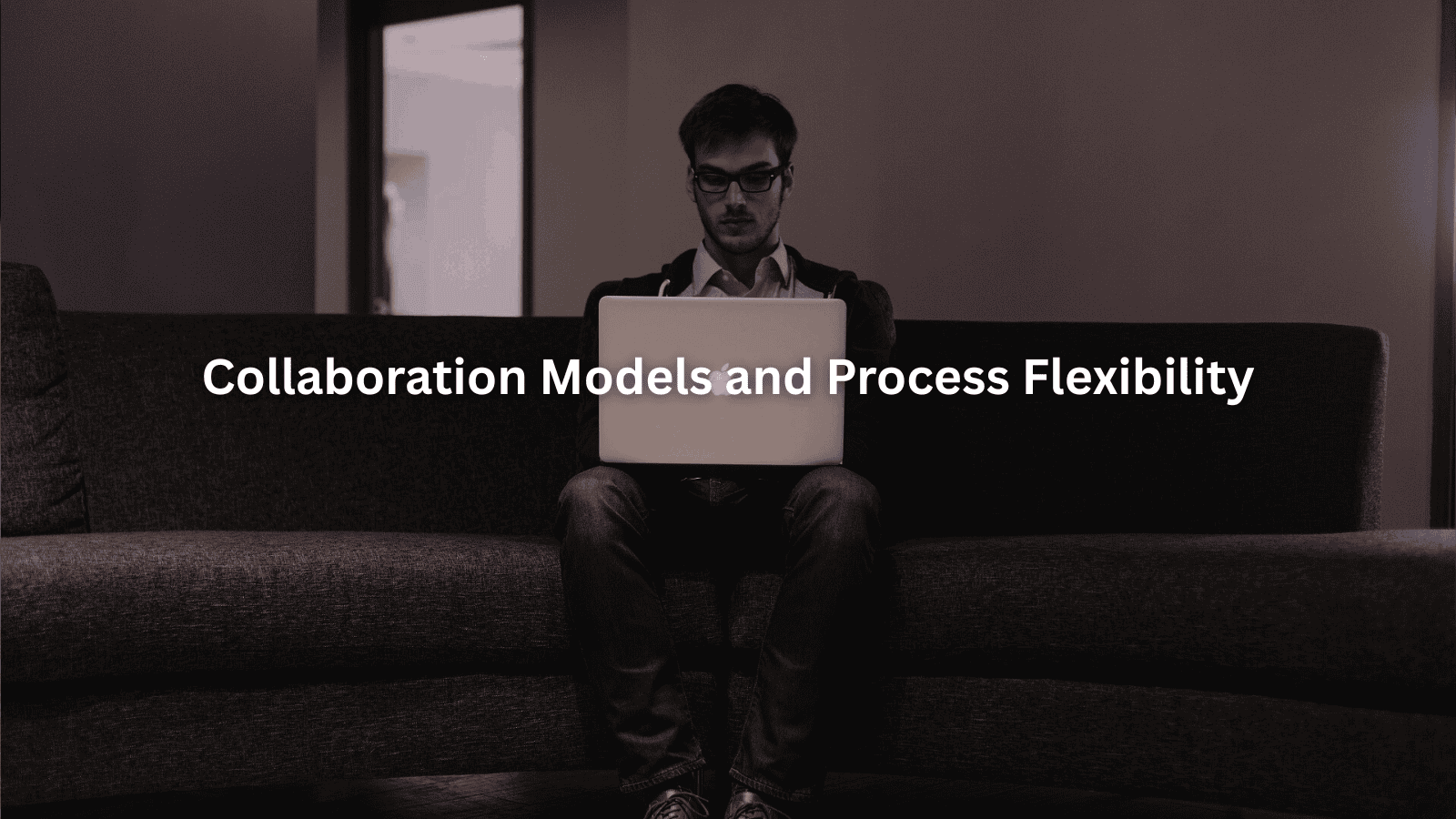
We’ve experimented with different models of human-AI collaboration. Sometimes, a “centaur” model works best: AI handles the groundwork, then humans step in for the creative finish. Other times, especially with technical or data-heavy content, the “cyborg” model shines, AI and humans edit together in real time, trading ideas and improvements as we go.
A hybrid feedback loop is probably the most sustainable. Iterative edits, frequent check-ins, and clear documentation help both AI and humans learn from each pass. It’s not always perfect, but the process gets smoother with every cycle.
Flexibility is our secret weapon. We regularly test and adjust our task allocation strategies. As new tools or research come up, we tweak our approach. There’s no single right answer, and what works for one team or project might not work for another.
Standardizing editorial guidelines is critical. We’ve developed shared protocols for AI-human interactions, when to escalate, how to flag concerns, and how to ensure compliance. This keeps everyone on the same page and maintains quality, even as we experiment with new workflows.
Project coordination and communication are easier when roles are clear. We outline who’s responsible for each step, set up efficient information flows, and make sure decisions aren’t bottlenecked by confusion. It cuts down on mistakes and keeps projects moving.
Real-World Collaboration: A Day at Jet Digital Pro
A typical project at Jet Digital Pro starts with scoping, what’s the client’s goal, what’s their voice, and what kind of content do they need? We feed that information into our AI platform, which drafts outlines and checks for SEO alignment. Next, our human editors jump in, shaping the draft, fact-checking, and tuning the tone.
Throughout the process, AI suggests tweaks or highlights inconsistencies. If there’s a tricky turn of phrase or a complex industry term, our humans step in. We often use shared documents where both AI and editors can make changes simultaneously, watching each other’s edits in real time.
We hold regular feedback sessions. Editors note what AI did well and where it fell short. That feedback is logged, and over time, our AI learns to avoid old mistakes. The result: content that’s more consistent, on-brand, and less likely to trip up a search engine’s AI detector.
We don’t just rely on AI for efficiency. Our editors see themselves as co-creators with the technology. Whether it’s blog writing, link building, or on-page SEO, we use AI to accelerate the grunt work, then apply our judgment and creativity to make the content sing.
Building Trust and Transparency in Human-AI Teams
It’s a work in progress, but the improvements speak for themselves. Trust is earned, not given, especially with new technology. We’re upfront with clients about how AI fits into our editorial process. If a section was AI-generated but heavily human-edited, we say so. This transparency fosters trust and sets realistic expectations.
We invest in AI literacy for our editors. Training sessions, technical deep-dives, and “AI bootcamps” help the team understand how the tools work, what their limits are, and how to get the best results. It’s not about fearing AI but learning how to use it well.
We’ve found that open communication, internally and with clients, makes collaboration smoother. If a client has concerns about authenticity or originality, we show our process. If an editor spots a recurring AI mistake, they speak up. The technology is only as smart as the people guiding it.
Are You a Digital Agency?
White Label SEO Content Services for Agencies
Scalable, customizable, and results-driven content solutions for your clients.
As noted by the U.S. Chamber of Commerce, clear human-AI teaming frameworks and transparent communication are essential for building trust in hybrid workflows. Teams that define ownership and highlight both machine and human contributions create more authentic, resilient content pipelines [ 2 ].
Optimizing Human-AI Editorial Workflows for Agencies
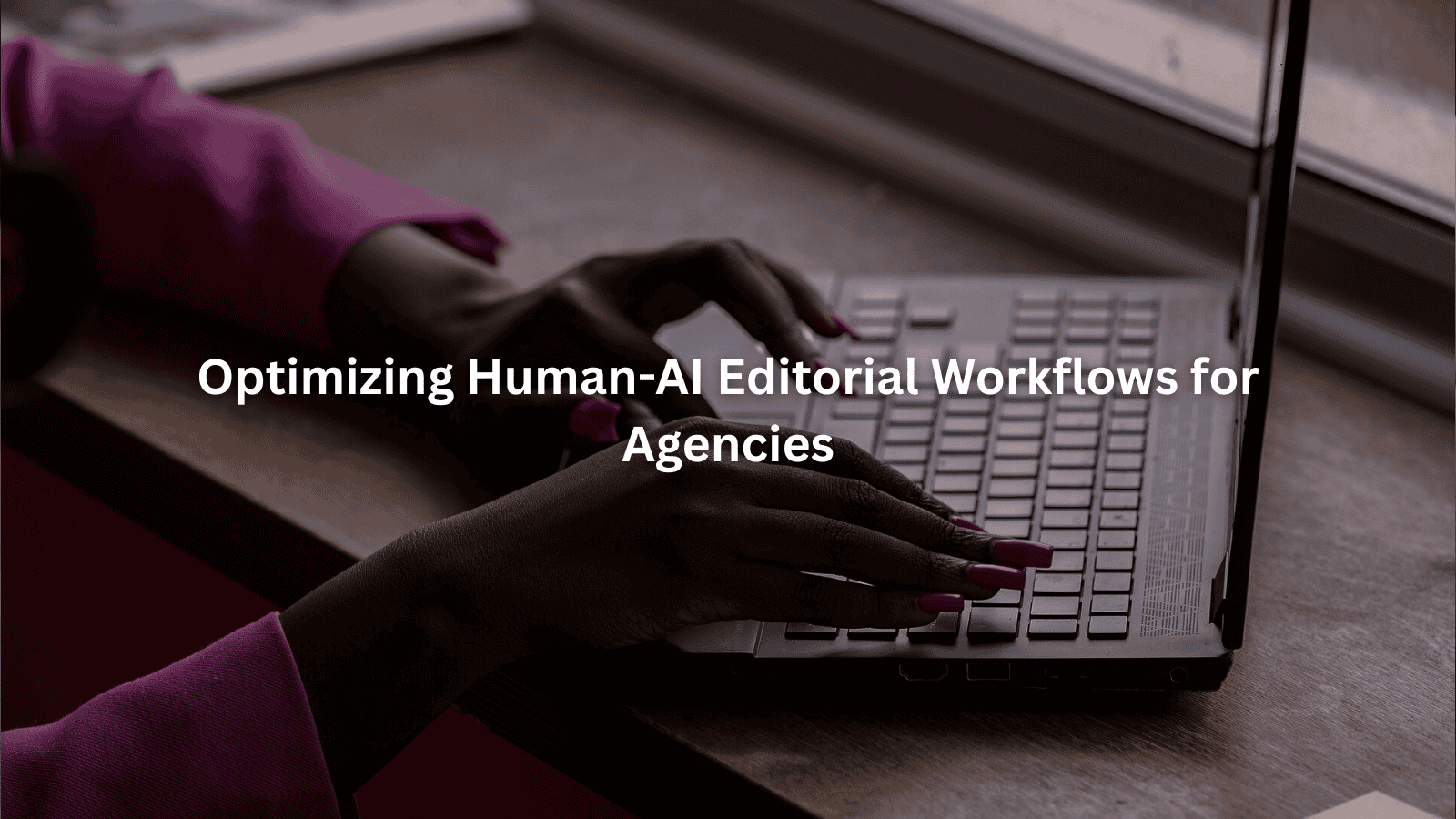
For agencies juggling multiple clients, optimizing the editorial workflow is crucial. We’ve built ours to be scalable and customizable. AI helps us handle bulk projects without dropping the ball on quality. Humans ensure that every piece is tailored, accurate, and on-message.
We use a modular workflow:
- Intake: Gather client requirements, keywords, and goals.
- AI Draft: Automated outline and first draft generation.
- Human Review: Editors fact-check, rewrite, and shape the narrative.
- AI Polish: Automated grammar and style checks.
- Final Human QA: Last pass for tone, accuracy, and compliance.
- Delivery: Ready-to-publish content sent to the client.
This approach means we can adapt quickly if a client needs a rush project or if guidelines change mid-campaign. Each step has clear responsibilities, so nothing falls through the cracks.
Future-Proofing Editorial Collaboration
We don’t see AI as a threat to editorial jobs. If anything, it’s made our work more interesting. Now, instead of getting bogged down in repetitive tasks, our editors focus on strategy, creativity, and problem-solving. The AI handles the boring parts. We handle the hard parts.
As AI technology improves, we expect the role of the human editor to shift further toward oversight, training, and creative direction. We’re always watching for new research and tools, ready to tweak our process as needed.
We encourage our team to experiment. Try a new workflow. Test a different feedback model. See what works. The best ideas often come from the ground up, editors noticing a pattern or suggesting a shortcut that saves hours.
Practical Advice for Human-AI Editorial Teams
If you’re just starting with human-AI editorial collaboration, here’s what we’ve learned and these best practices for blending AI and human editing can help you avoid common missteps.:
- Define roles and responsibilities from the start.
- Train both your AI tools and your human editors, don’t neglect either.
- Create feedback loops that let both sides learn and improve.
- Standardize your workflows, but keep them flexible.
- Be transparent with clients and stakeholders about your process.
- Use AI to handle volume and speed, but trust humans for creativity and judgment.
- Keep experimenting. The right workflow might look different for each project.
At Jet Digital Pro, we’re always refining how we blend AI and human expertise. It’s not perfect, and sometimes we learn the hard way. But the results, content that’s sharp, on-brand, and ready for the toughest Google update, speak for themselves.
If you’re looking to build a similar collaborative workflow, start small. Test, adjust, and don’t be afraid to let your editors and AI tools learn from each other. The future of content isn’t human or machine, it’s both, working together.
Need a Strategic SEO Content Partner?
Let’s craft SEO content that ranks, converts, and grows your brand.
Talk to UsReady to see how a human-AI editorial partnership could work for your agency? Reach out to our team at Jet Digital Pro to start a conversation about scalable, high-quality content that always puts your brand first.
FAQ
How do we prevent AI bias from slipping into our editorial content?
AI sometimes picks up on patterns from the data it’s trained on, which can introduce bias into content drafts. We handle this by having human editors review every piece with a checklist for fairness and accuracy. Editors look for phrasing or claims that feel off, compare them to trusted sources, and adjust the text so it’s balanced before publishing.
What should we do when our human editors and AI suggest conflicting changes?
It’s not unusual for humans and AI to disagree, especially on style or tone. When this happens, the editor reviews both options, considering the client’s needs and the intended audience. We often test both suggestions, sometimes with a small group, and go with the one that fits best. Documentation helps track these choices for future consistency.
Can an AI editor adapt to unique client voices or industry jargon?
Yes, but it takes a bit of training and oversight. We upload client style guides, sample articles, and preferred terminology to the AI system. Human editors review drafts for accuracy and voice, making corrections as needed. Over time, the AI learns these preferences, but we still do a final pass to make sure nothing sounds out of place.
How do we handle sensitive or confidential content with AI involvement?
We take privacy seriously by restricting which documents the AI can access. Sensitive topics are flagged, and only trusted editors handle them. AI is used mostly for structural help or grammar, never for generating confidential information. Human editors always have the final say, and we’re careful about what data gets stored or shared outside our secure system.
What’s the best way to measure the success of human-AI editorial collaboration?
Success isn’t just about speed or quantity. We look at content accuracy, client satisfaction, and how well the final piece matches the original brief. Feedback from editors and clients helps us spot where the process works and where it needs tweaking. Over time, fewer revisions and positive feedback are signs that our collaboration is on track.
Conclusion
Working with both human editors and AI has transformed our content process, faster drafts, sharper edits, and fewer missed details. By dividing tasks clearly and communicating openly, we’ve built a flexible, reliable system. AI handles the repetitive work, while our editors bring creativity and strategic insight. It’s not about replacing people, it’s about raising the bar together. In our experience, this partnership creates content that’s smarter, stronger, and built to perform.
Want scalable, agency-ready content that works? Contact JetDigitalPro today.
References
- https://solutionsreview.com/the-core-human-skills-required-for-success-during-the-ai-boom
- https://www.uschamber.com/co/run/technology/human-ai-teaming
Related Articles
- https://jetdigitalpro.com/why-human-grammar-check-for-ai
- https://jetdigitalpro.com/integrating-human-ai-editors-into-workflow/
- https://jetdigitalpro.com/best-practices-for-human-ai-editing
P.S – Whenever you’re ready,
we’re here to help elevate your SEO content.
Partner with us for strategic, scalable content that drives real organic growth.
Contact Us Now


